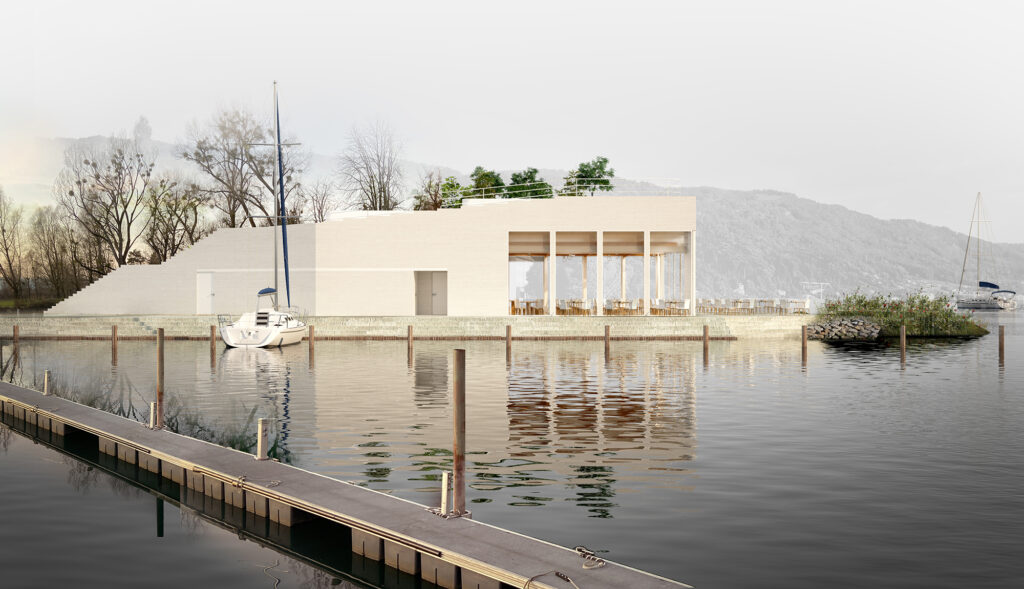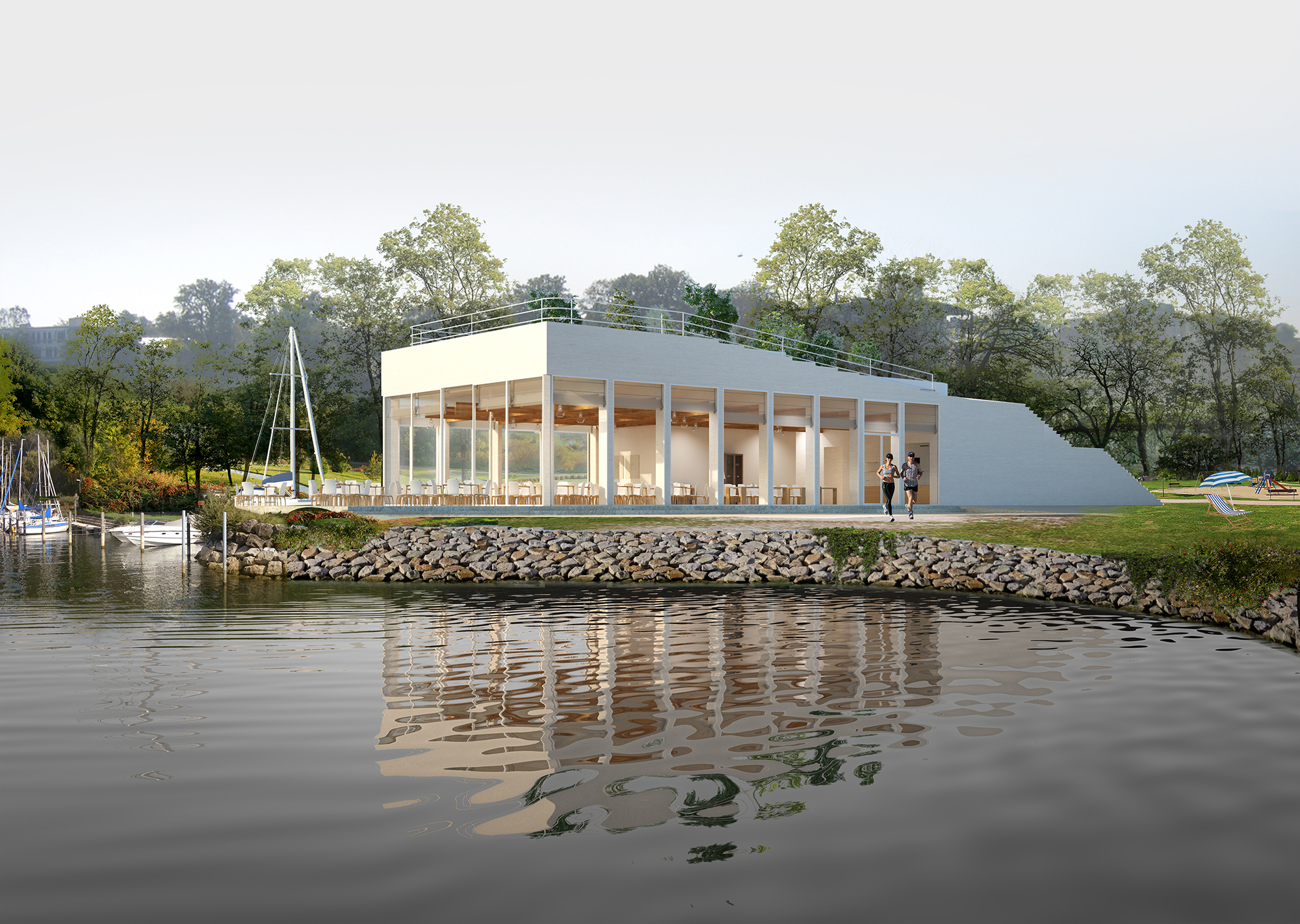“AGORA by the LAKE” reconsiders the architectural presence designated to be added on site by introducing a nature-inclusive public stage. An abundant stairway absorbs the people’s flow taking them to an unusual viewing podium that looks toward the lake. A simple but generous platform which gradually elevates the public interest creates a contemporary “Casa Malaparte” that promotes a proactive and integrated urban life. The new common future that this project fosters considers not only the needs of the forthcoming generations but also the rights of the natural environment to be developed by its own rules. Less architecture, or an absolute abandonment of abstraction in design, creates a solid binomial between nature and publicness aiming at supporting a new era for Lochau recreational belt.
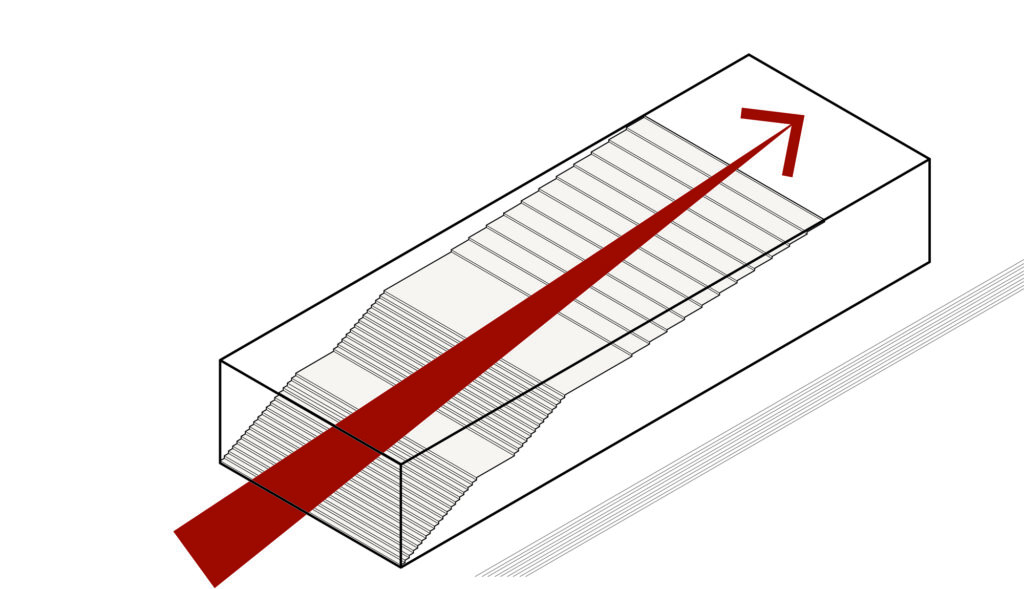
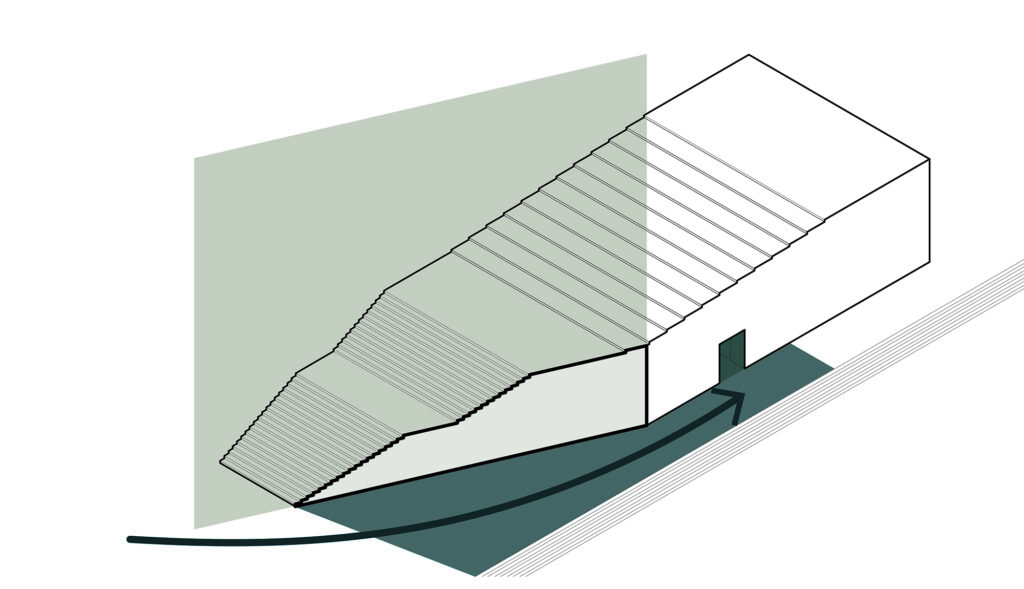
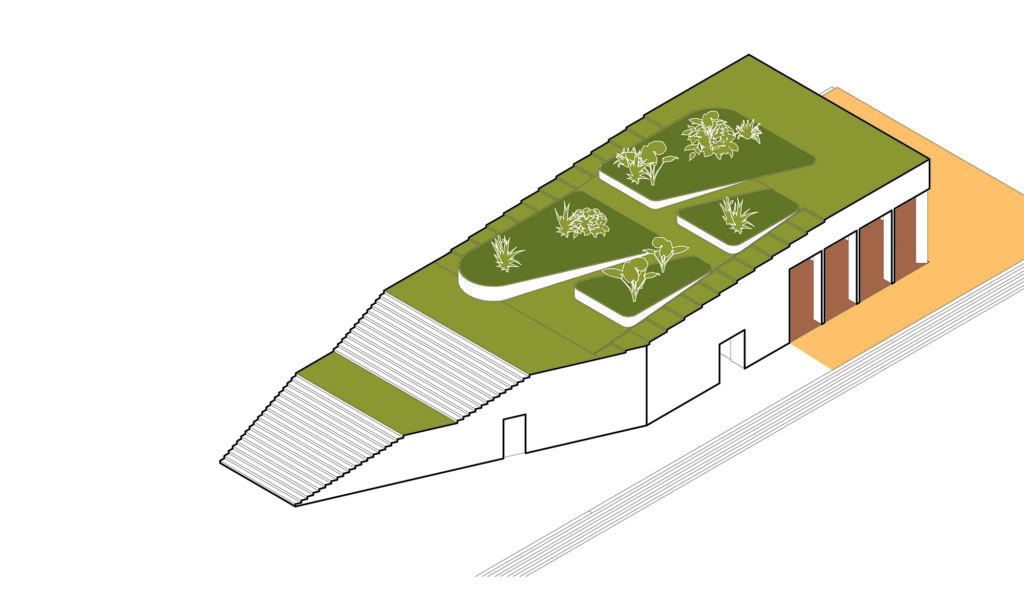
| LOCATION | Lochau, Austria |
| YEAR | 2023 |
| CLIENT | Confidential |
| STATUS | Competition |
| PROGRAM | Recreational |
| PROJECT ARCHITECT | Julian Beqiri |
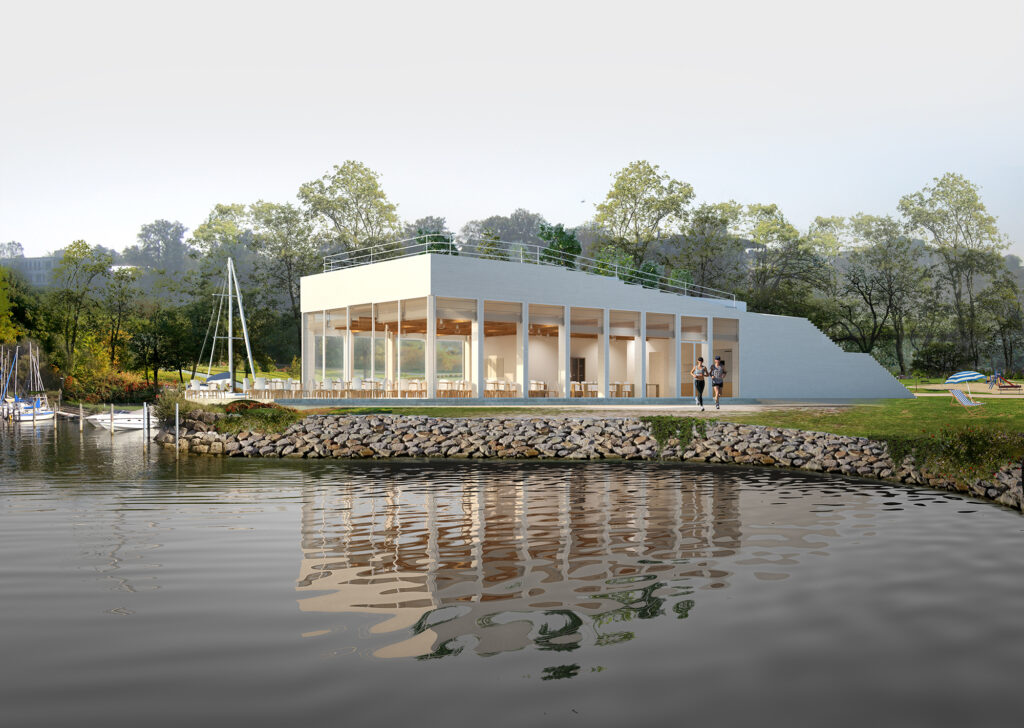
Publicness at the core
What comprises the humans’ effort to exit the age of Anthropocene and no longer impact life on Earth, but instead nurture it, is principally a change in mindset which promotes companionship between species. We can certainly say that this is achieved when the symbiosis between people’s activity and a thriving nature is broadly appreciable. In this context, “AGORA by the LAKE” reconsiders the architectural presence designated to be added on site by introducing a nature-inclusive public stage. An abundant stairway absorbs the people’s flow and take them to an unusual viewing podium that looks toward the lake. A simple but generous platform which gradually elevates the public interest creates a contemporary “Casa Malaparte” that promotes a proactive and integrated urban life.
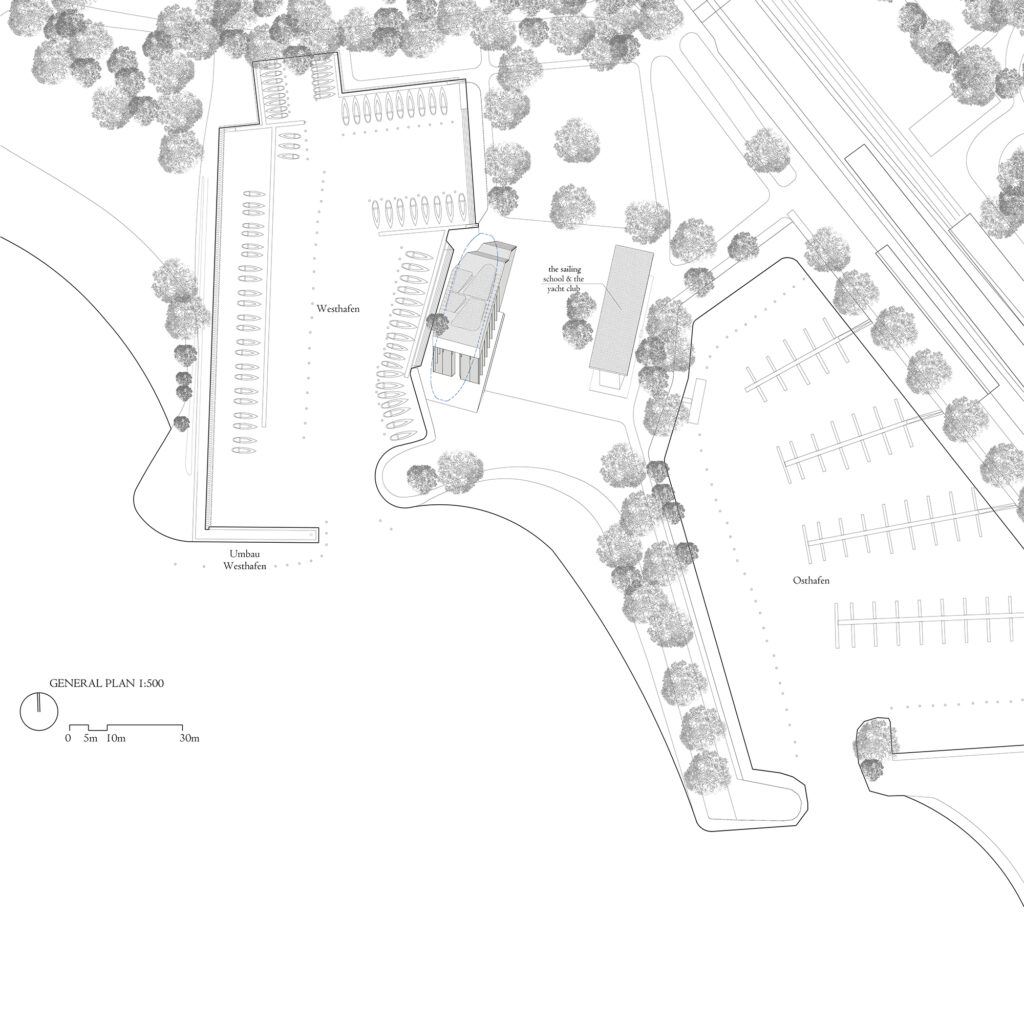
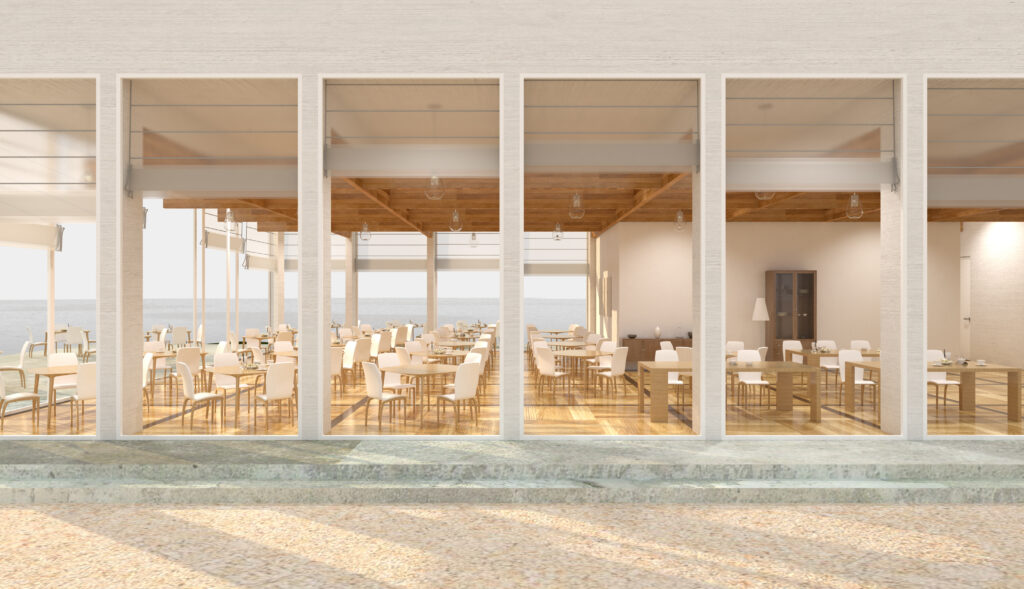
A nature-inclusive public space
Public space is a vital part of everyday urban life and as an open-air living room it promotes continual cohesion between city dwellers. This unconditionally accepted design philosophy has conceived the great public places we today inherit. But, as we approach the age of Symbiocene and recognize nature, along with its inherent biodiversity, as key to functioning societies and economies, its involvement in our contemporary design has become critical. Nature offers great inspirations when it comes to finding solutions and we have worked with nature since the beginning of mankind. In this respect, “AGORA by the LAKE” calls for a radical reevaluation of our design stock by giving priority to the impeccable combination of publicness and a nature that thrives. The public space as the traditional medium which prompts open communication between strangers will also easily manifest the cultural locality. Using the viewing platform as a means of seduction, all the visitors climbing the stairs will “have no choice” but to pass through a nature-inclusive livable terrace. In our modern day and age, we seem to have taken nature for granted or even have turned against it, but by providing room for nature we bring it back to the core of our recreational spaces.
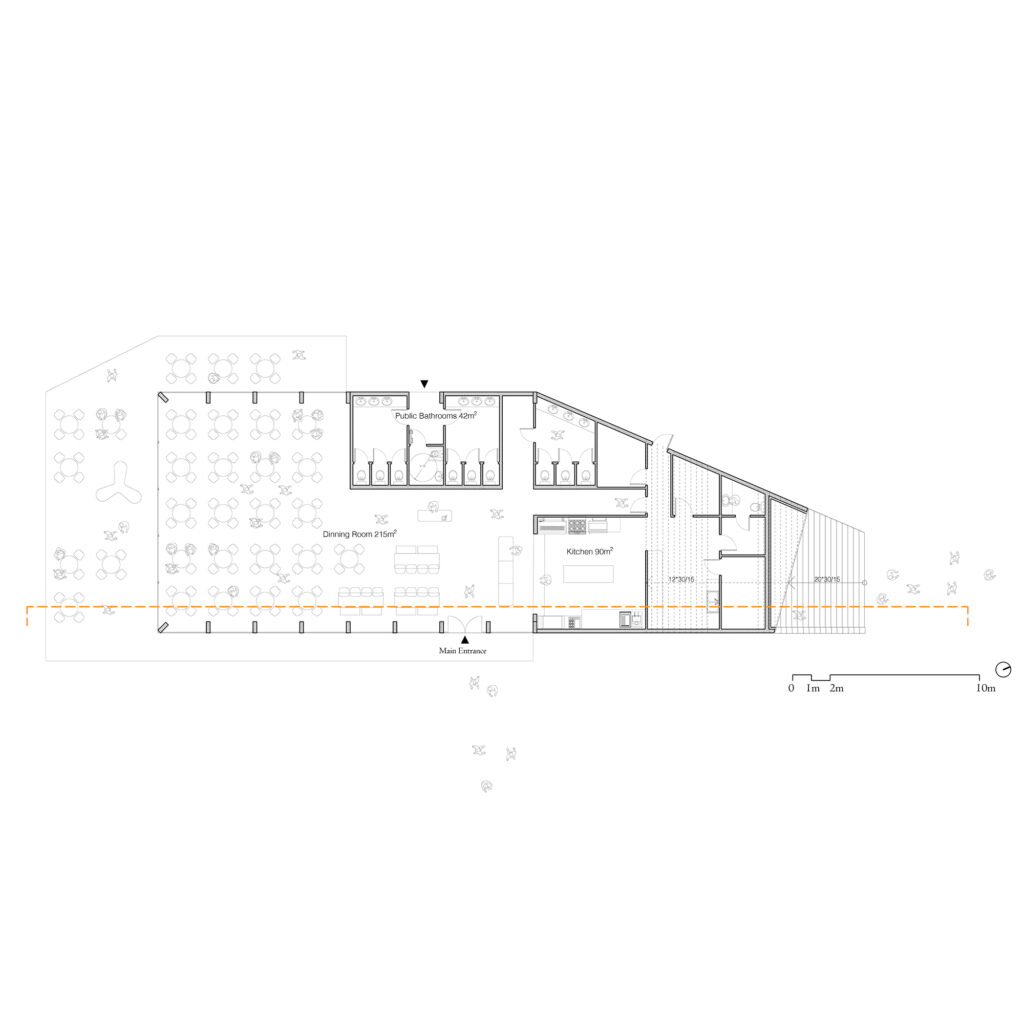
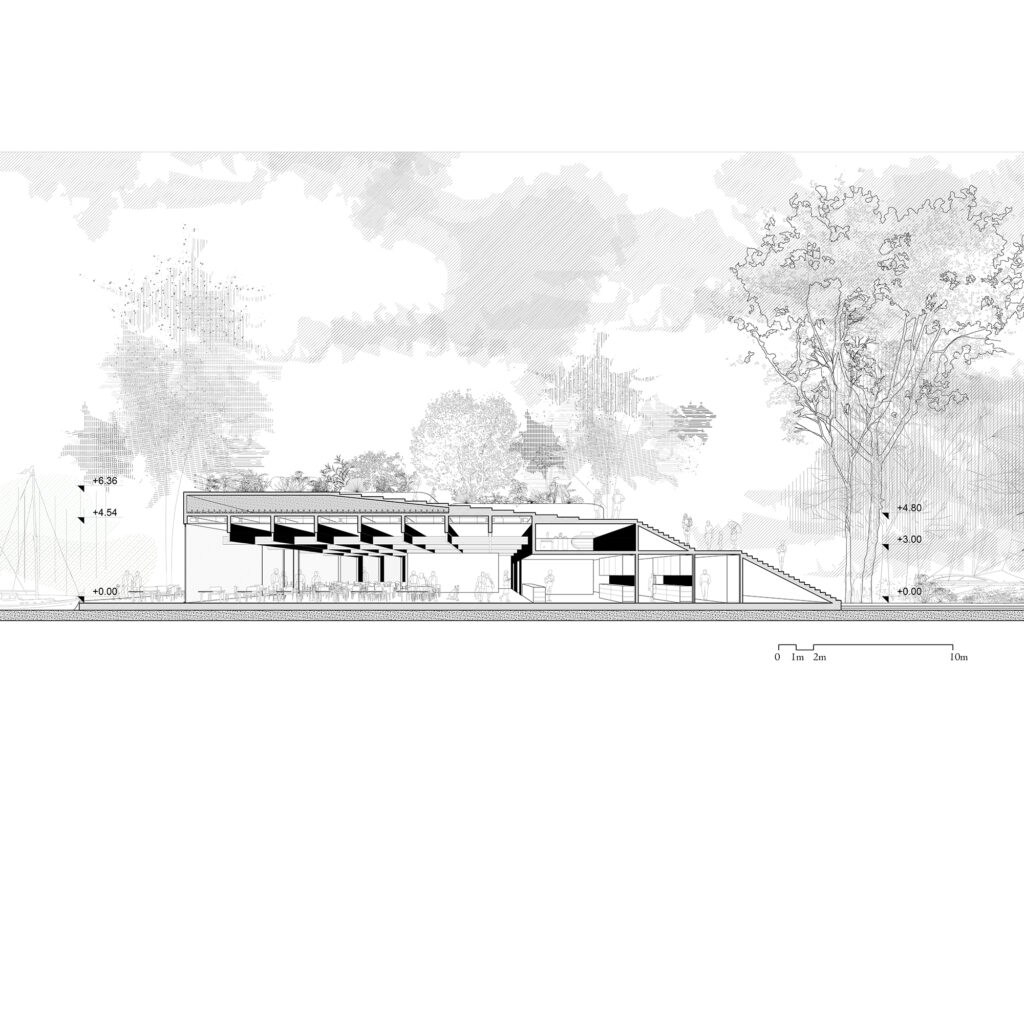
Less architecture or an inverted pyramid of priorities
The new “common future” that this project fosters considers not only the needs of the forthcoming generations but also the rights of the natural environment to be developed by its own rules. A solid binomial between nature and publicness becomes the appropriate approach towards supporting a new era for Lochau waterfront. Less architecture, or an absolute abandonment of abstraction in design, tries to give answers to the dilemma and problems of our own time. Asked about what is the way forward for architecture, the famous British architect, critic and historian Kenneth Frampton responded that the only remedial possibility today seems to reside in the field of landscape architecture rather than in architecture itself. Less architecture has quietly become equivalent to a new way of reimagining public space as a biodiverse landscape. While relentlessly working to merge architecture with a contextual ecosystem, “AGORA by the LAKE” advocates for an inverted pyramid of design priorities. From the bottom of the hierarchy upwards, the fundamentals are: a fully operating commercial activity at the bottom; publicness in between and nature promotion on top. This shift in design mindset is expected to significantly change the way how we use the environment and put forward a new model of local economy.
